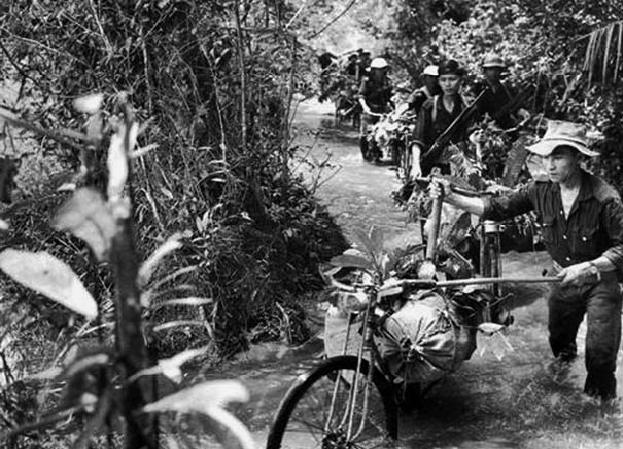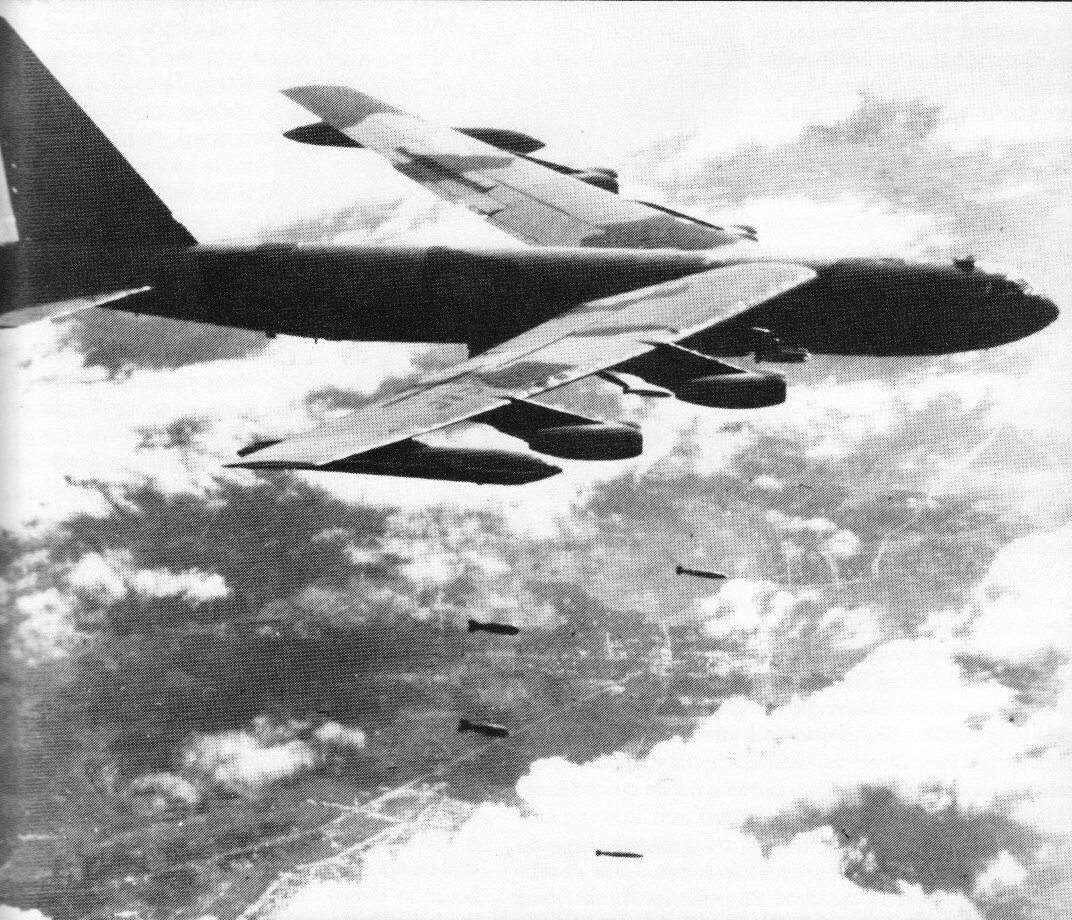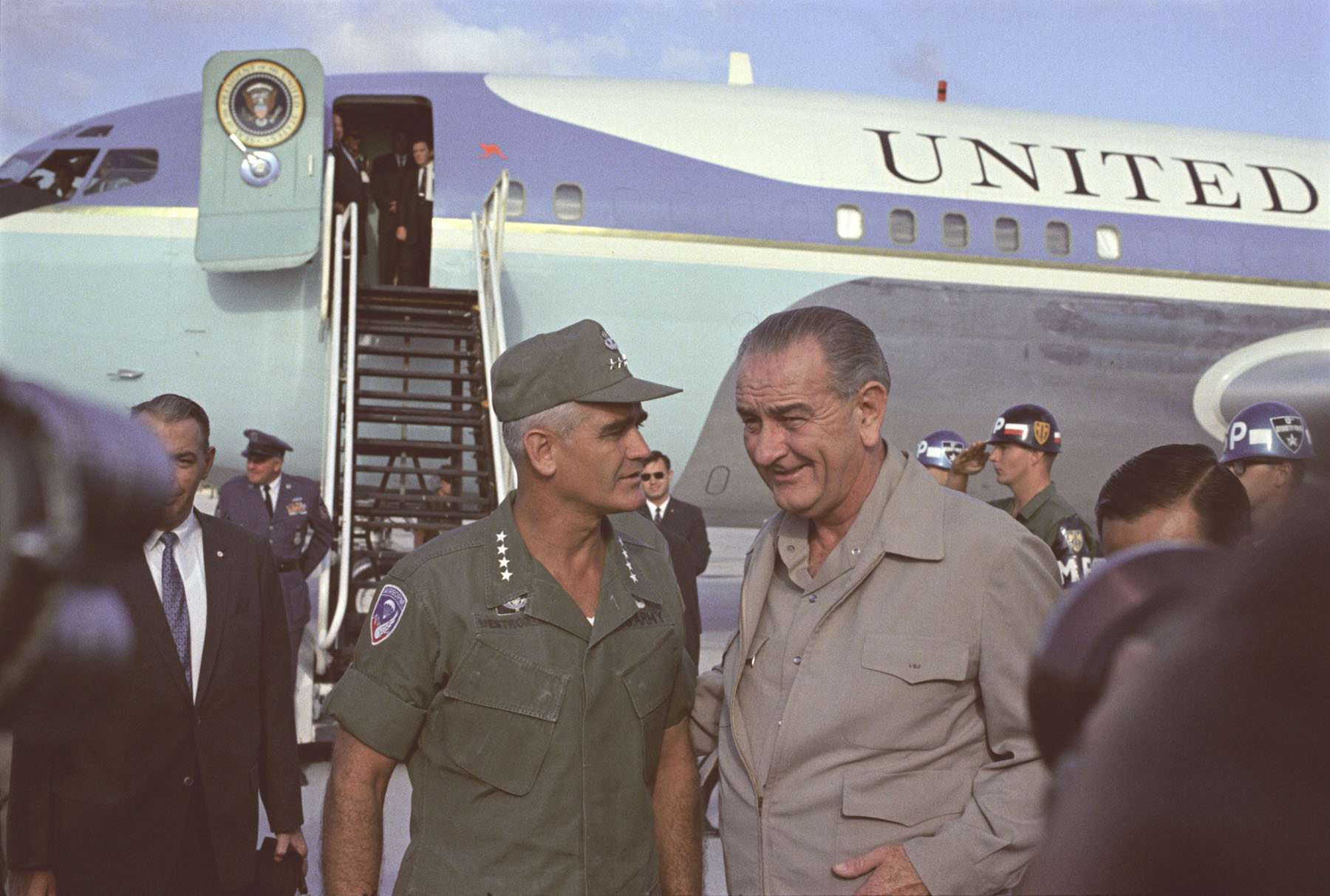|
Hoàng Xuân Lãm
Hoàng Xuân Lãm (10 October 1928, Huế–2 May 2017, Davis, California) was a South Vietnamese lieutenant general in the Army of the Republic of Vietnam (ARVN). Military career In 1964 he commanded the 23rd Division, where his US advisor regarded him as satisfactory. In late 1965, while Lãm was serving as commander of the 2nd Division, COMUSMACV General William Westmoreland and his chief of staff of operations, General William E. DePuy, blamed the division's temerity on its "less aggressive" commander, who had been either unwilling or unable to get the division moving during the year. During the Buddhist Uprising he was given command of I Corps on 30 May 1966, becoming the sixth corps commander in less than three months. During the Battle of Khe Sanh the 1,500 civilians, 400 of which were ethnic Bru, of the area were looking for refuge. Lãm authorized the evacuation of the 1,100 Vietnamese, but the Bru were told to stay, Hoang Xuan Lam insisting that, 'there was no pl ... [...More Info...] [...Related Items...] OR: [Wikipedia] [Google] [Baidu] |
Huế
Huế (formerly Thừa Thiên Huế province) is the southernmost coastal Municipalities of Vietnam, city in the North Central Coast region, the Central Vietnam, Central of Vietnam, approximately in the center of the country. It borders Quảng Trị province, Quảng Trị to the north, Quảng Nam and Đà Nẵng to the south, Salavan province, Salavan of Laos to the west and the South China Sea to the east. As one of the country's six direct-controlled municipality, direct-controlled municipalities, it falls under the administration of the Politics of Vietnam, central government. Huế has 128 km of coastline, 22,000 hectare, ha of lagoons and over 200,000 ha of forest. The city is located in the middle of the North Central and South Central regions (including the South Central Coast and Central Highlands (Vietnam), Central Highlands), and is transitional in many aspects: geology, climate, administrative division and local culture. Huế and its surroundings is widely k ... [...More Info...] [...Related Items...] OR: [Wikipedia] [Google] [Baidu] |
National Order Of Vietnam
The National Order of Vietnam () was a combined military-civilian decoration of South Vietnam and was considered the highest honor that could be bestowed upon an individual by the Republic of Vietnam government. The decoration was created in 1950 and was awarded to any person who performed "grandiose works, remarkable deeds, exhibited bravery, or for those who have honored and served the country by lofty virtues and outstanding knowledge." The National Order was modeled after the French National Order of the Legion of Honour, and as such it was issued in five degrees: *Grand Cross – wore the badge of the Order on a sash on the right shoulder, plus the star of the Order on the right stomach or just the star of the Order on the left stomach *Grand Officer – wore the star of the Order on the right stomach *Commander – wore the badge on a necklet *Officer – wore the badge on a ribbon with rosette on the left chest *Knight – wore the badge on a ribbon on the left ches ... [...More Info...] [...Related Items...] OR: [Wikipedia] [Google] [Baidu] |
Ho Chi Minh Trail
The Ho Chi Minh Trail (), also called Annamite Range Trail () was a Military logistics, logistical network of roads and trails that ran from North Vietnam to South Vietnam through the kingdoms of Kingdom of Laos, Laos and Cambodia (1953–1970), Cambodia. The system provided support, in the form of manpower and materiel, to the Viet Cong (or "VC") and the People's Army of Vietnam (PAVN), during the Vietnam War. Construction for the network began following the North Vietnamese invasion of Laos in July 1959. At the time it was believed to be the main supply route, however it later transpired that the Sihanouk Trail which ran through Cambodia was handling significantly more material. It was named by the U.S. after the North Vietnamese leader Ho Chi Minh, Hồ Chí Minh. The origin of the name is presumed to have come from the First Indochina War, when there was a Viet Minh maritime logistics line called the "Route of Ho Chi Minh", and shortly after late 1960, as the present trail d ... [...More Info...] [...Related Items...] OR: [Wikipedia] [Google] [Baidu] |
IV Corps (South Vietnam)
The IV Corps () was a corps of the Army of the Republic of Vietnam (ARVN), the army of the nation state of South Vietnam that existed from 1955 to 1975. It was one of four corps in the ARVN, and it oversaw the Mekong Delta region of the country. The Mekong Delta was the heartland of agricultural South Vietnam, it encompassed the fertile alluvial plains formed by the Mekong River and its main tributary, the Bassac River. With its sixteen provinces, the Delta contained about two-thirds of the nation's population and yielded the same proportion in rice production. The terrain of IV Corps differed radically from other regions. Flat and mostly uncovered, it consisted of mangrove swamps and ricefields crisscrossed by an interlocking system of canals, natural and artificial. Except for some isolated mountains to the west near the Cambodian border, few areas in the Delta had an elevation of more than above sea level. During the monsoon season, most of the swampy land north of Route QL- ... [...More Info...] [...Related Items...] OR: [Wikipedia] [Google] [Baidu] |
II Corps (South Vietnam)
The II Corps () was a corps of the Army of the Republic of Vietnam (ARVN), the army of the nation state of South Vietnam that existed from 1955 to 1975. It was one of four corps in the ARVN, and it oversaw the central highlands region, north of the capital Saigon. Its corps headquarters was in the mountain town of Pleiku. II Corps became operational in April 1958. One notable ARVN unit of II Corps, the 3d Armored Cavalry Squadron, earned the Presidential Unit Citation (United States) The Presidential Unit Citation (PUC), originally called the Distinguished Unit Citation, is awarded to units of the uniformed services of the United States, and those of allied countries, for extraordinary heroism in action against an armed e .... The 21st Tank Regiment was formed at Pleiku in 1972.Simon Dunstan, 'Vietnam Tracks: Armor into Battle 1945–75,' Osprey Publishing Ltd, London, 1982, 59. 1972 Easter Offensive The objective of the North Vietnamese forces during the third pha ... [...More Info...] [...Related Items...] OR: [Wikipedia] [Google] [Baidu] |
Cao Văn Viên
Cao Văn Viên (; December 21, 1921 – January 22, 2008) was a four-star army general in the Army of the Republic of Vietnam during the Vietnam War. He rose to the position of Chairman of the South Vietnamese Joint General Staff. Butterfield, Fox. "The Communists Were Stunned, Too" ''The New York Times'' May 12, 1985Holley, Joe. "Cao Van Vien, South Vietnam 4-Star General" '''' January 30, 2008 Considered one of "the most gifted" of 's military leaders, he was ... [...More Info...] [...Related Items...] OR: [Wikipedia] [Google] [Baidu] |
Joint General Staff
The Joint General Staff (JGS) was a body of senior uniformed leaders in the South Vietnamese military which advised the Ministry of National Defence and the President of South Vietnam. Organisation The JGS carried out administrative and planning functions for the entire Republic of Vietnam Military Forces. Actually an Army of the Republic of Vietnam (ARVN) headquarters, it ran the ARVN's training and logistical system and directly controlled a number of support units in the Saigon area. As the highest South Vietnamese military headquarters, it also dealt directly with the theater-level American military headquarters in South Vietnam, Military Assistance Command, Vietnam (MACV). However, it possessed only limited authority over the Corps commanders and other major military elements. The JGS itself consisted of five functional elements, supervised by a chief of staff. An Operations Directorate controlled five staff sections U-2, J-3, J-5, J-6 and J-7); a Personnel Directorate had ... [...More Info...] [...Related Items...] OR: [Wikipedia] [Google] [Baidu] |
Nguyễn Văn Thiệu
Nguyễn Văn Thiệu (; 5 April 1923 – 29 September 2001) was a South Vietnam, South Vietnamese military officer and politician who was the Leaders of South Vietnam, president of South Vietnam from 1967 to 1975. He was a general in the Republic of Vietnam Military Forces, Republic of Vietnam Armed Forces (RVNAF), became head of a military junta in 1965, and then president after winning a rigged election in 1967. He established rule over South Vietnam until he resigned and left the nation and relocated to Taipei a few days before the fall of Saigon and the ultimate North Vietnamese victory. Born in Phan Rang–Tháp Chàm, Phan Rang in the South Central Coast, south central coast of Vietnam, Thieu joined the communist-dominated Việt Minh of Hồ Chí Minh in 1945 but quit after a year and joined the Vietnamese National Army (VNA) of the French-backed State of Vietnam. He gradually rose up the ranks and, in 1954, led a battalion in expelling the communists from his native vil ... [...More Info...] [...Related Items...] OR: [Wikipedia] [Google] [Baidu] |
Leaders Of South Vietnam
This is a list of leaders of South Vietnam, since the establishment of the Autonomous Republic of Cochinchina in 1946, and the division of Vietnam in 1954 until the fall of the Republic of Vietnam in 1975, and the reunification of Vietnam in 1976. Legends Heads of state State of Vietnam (1949–1955) Chief of State Under the State of Vietnam, the position of head of state A head of state is the public persona of a sovereign state.#Foakes, Foakes, pp. 110–11 " he head of statebeing an embodiment of the State itself or representative of its international persona." The name given to the office of head of sta ... is known as Chief of the State of Vietnam and was held by Bảo Đại and Ngo Dinh Diem First Republic of Vietnam (1955–1963) President Vice president Military junta (1963–1967) Heads of state During the military junta period, the heads of state of South Vietnam did not always hold real power, the heads of military were de facto lea ... [...More Info...] [...Related Items...] OR: [Wikipedia] [Google] [Baidu] |
Buddhist Uprising
The Buddhist Uprising of 1966 (), or more widely known in Vietnam as the Crisis in Central Vietnam (), was a period of civil and military unrest in South Vietnam, largely focused in the I Corps area in the north of the country in central Vietnam. The area is a heartland of Vietnamese Buddhism, and at the time, activist Buddhist monks and civilians were at the forefront of opposition to a series of military juntas that had been ruling the nation, as well as prominently questioning the escalation of the Vietnam War. During the rule of the Catholic Ngô Đình Diệm, the discrimination against the majority Buddhist population generated the growth of Buddhist institutions as they sought to participate in national politics and gain better treatment. In 1965, after a series of military coups that followed the fall of the Diệm regime in 1963, Air Marshal Nguyễn Cao Kỳ and General Nguyễn Văn Thiệu finally established a stable junta, holding the positions of Prime Ministe ... [...More Info...] [...Related Items...] OR: [Wikipedia] [Google] [Baidu] |
William E
William is a masculine given name of Germanic origin. It became popular in England after the Norman conquest in 1066,All Things William"Meaning & Origin of the Name"/ref> and remained so throughout the Middle Ages and into the modern era. It is sometimes abbreviated "Wm." Shortened familiar versions in English include Will or Wil, Wills, Willy, Willie, Bill, Billie, and Billy. A common Irish form is Liam. Scottish diminutives include Wull, Willie or Wullie (as in Oor Wullie). Female forms include Willa, Willemina, Wilma and Wilhelmina. Etymology William is related to the German given name ''Wilhelm''. Both ultimately descend from Proto-Germanic ''*Wiljahelmaz'', with a direct cognate also in the Old Norse name ''Vilhjalmr'' and a West Germanic borrowing into Medieval Latin ''Willelmus''. The Proto-Germanic name is a compound of *''wiljô'' "will, wish, desire" and *''helmaz'' "helm, helmet".Hanks, Hardcastle and Hodges, ''Oxford Dictionary of First Names'', Oxfor ... [...More Info...] [...Related Items...] OR: [Wikipedia] [Google] [Baidu] |
William Westmoreland
William Childs Westmoreland (26 March 1914 – 18 July 2005) was a United States Army general, most notably the commander of United States forces during the Vietnam War from 1964 to 1968. He served as Chief of Staff of the United States Army from 1968 to 1972. In Vietnam, Westmoreland adopted a strategy of attrition against the Viet Cong and the North Vietnamese Army, to drain them of manpower and supplies. He also made use of the United States' superiority in artillery and air power, employed in tactical confrontations and in relentless strategic bombing of North Vietnam. As time went on and success was not gained, public support for the war diminished, especially after the Battle of Khe Sanh and the Tet Offensive in 1968. When he was reassigned as Army Chief of Staff, United States military forces in Vietnam had reached a peak of 535,000 personnel. Westmoreland's strategy was ultimately politically and militarily unsuccessful. Growing United States casualties and the dra ... [...More Info...] [...Related Items...] OR: [Wikipedia] [Google] [Baidu] |






